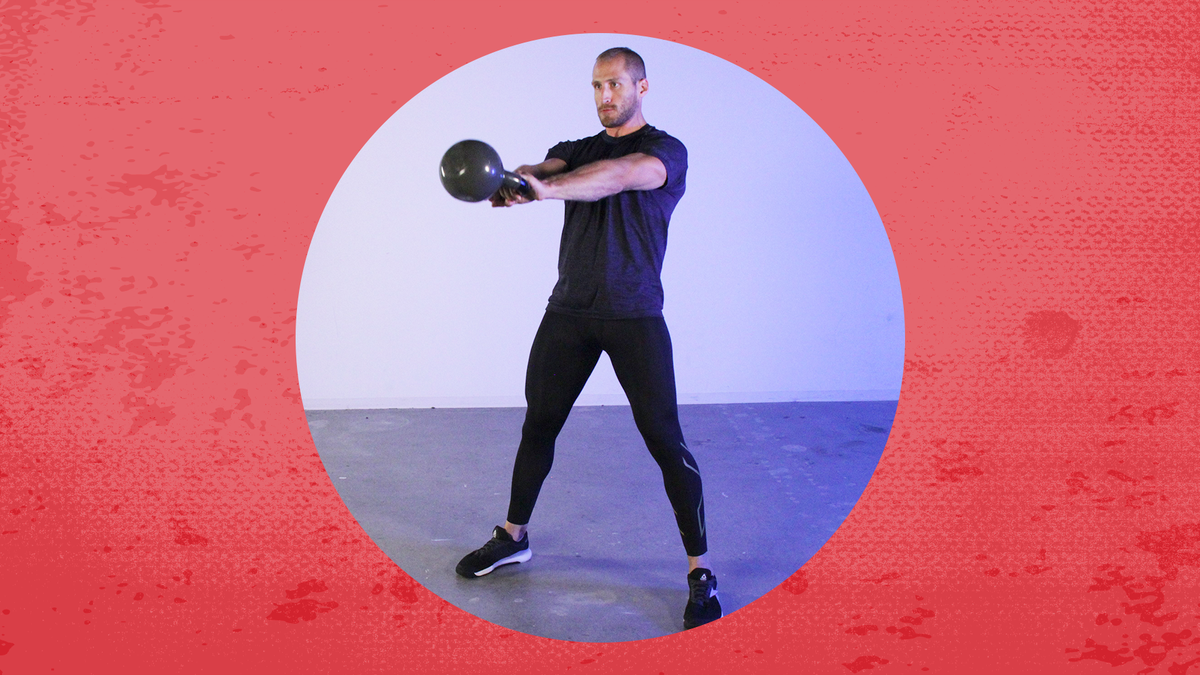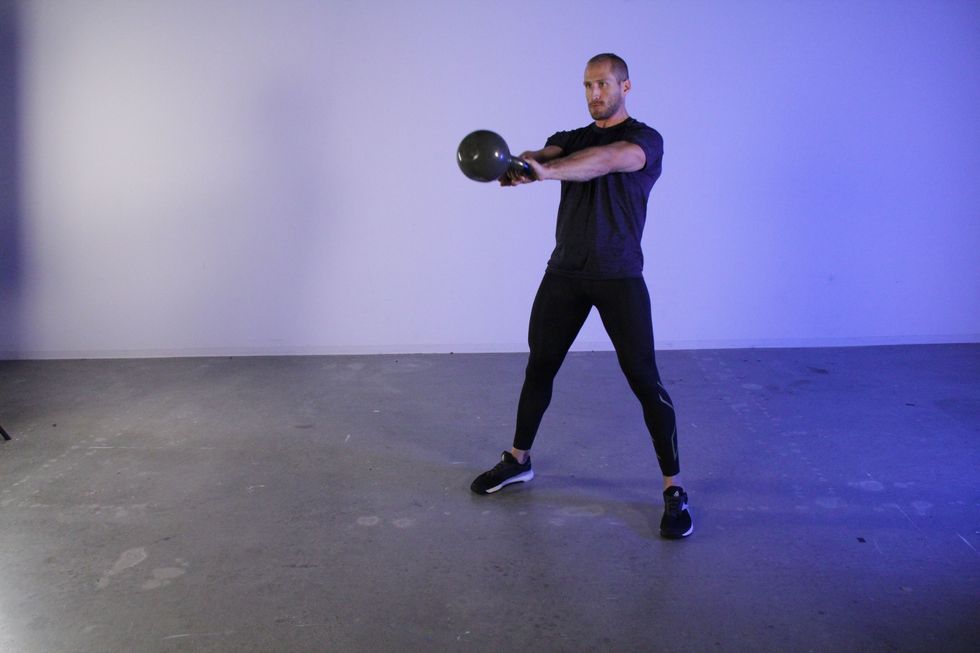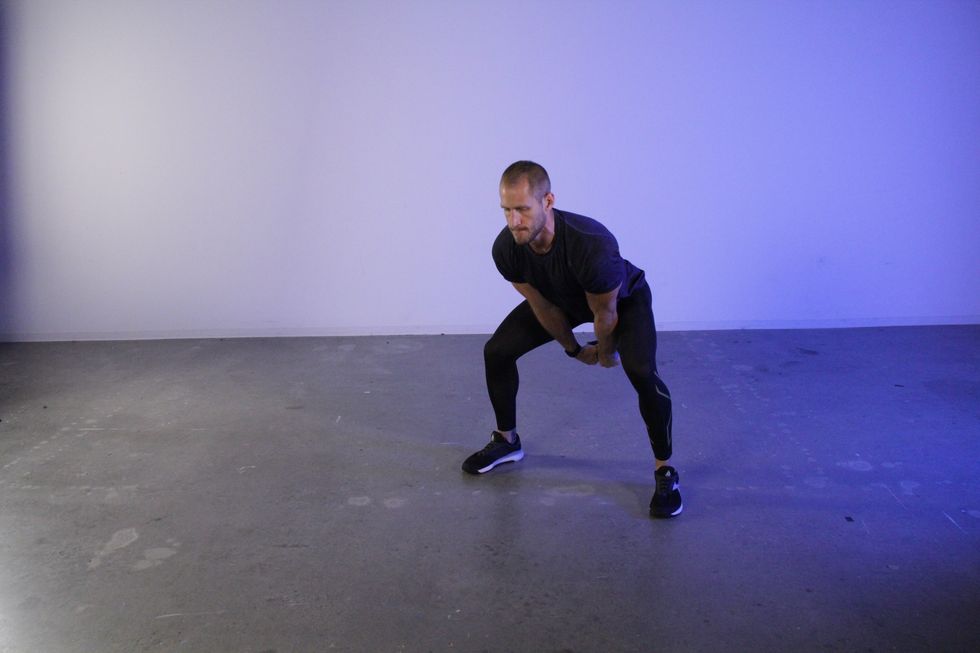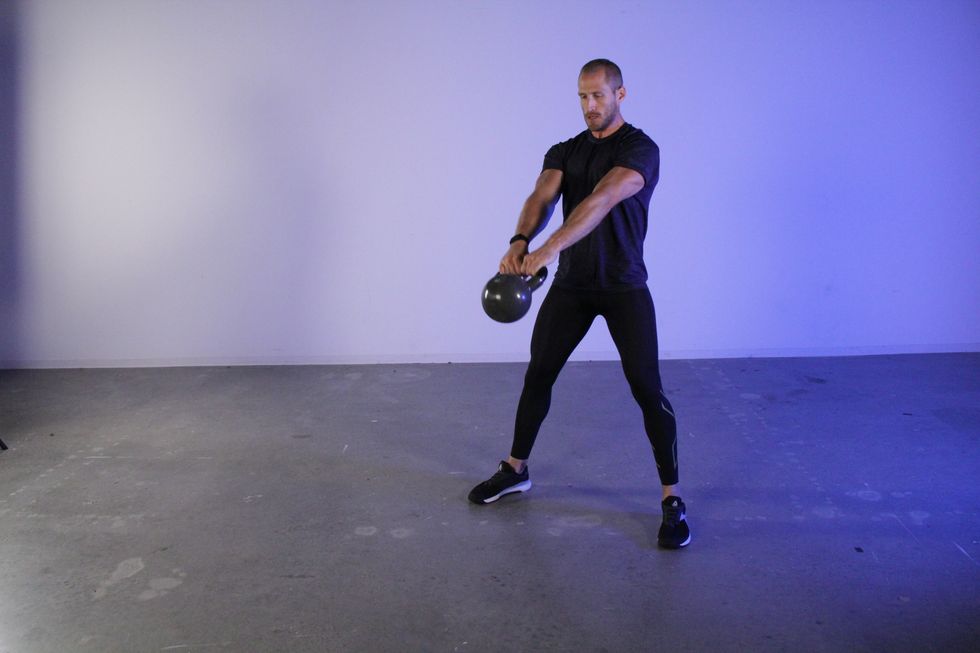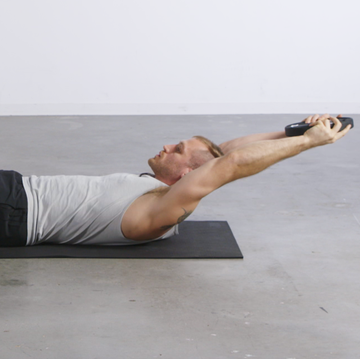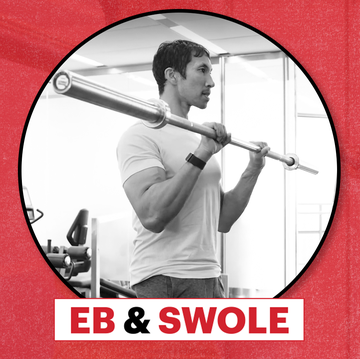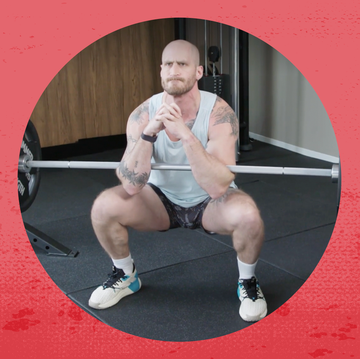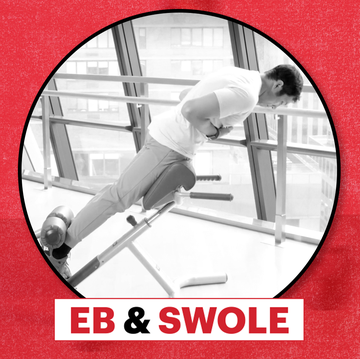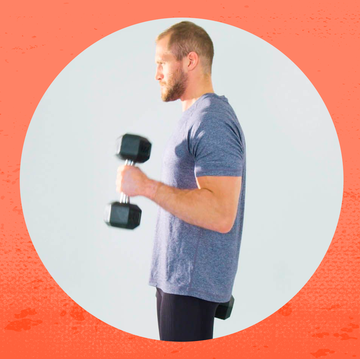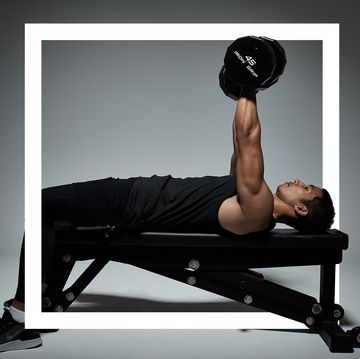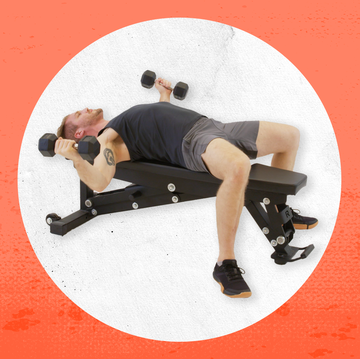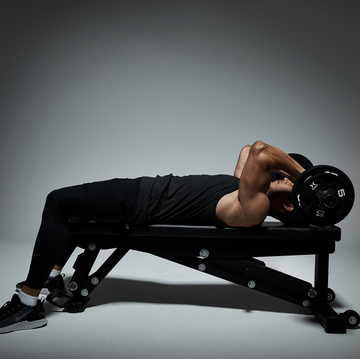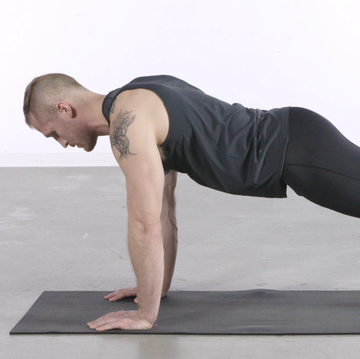IF YOU'VE PICKED up a kettlebell, chances are you've tried to swing it. The implement's unique shape, with a wide handle on top and weight at the bottom, is perfect for ballistic movements like swings (and cleans and snatches), so it's only natural that you gave it a try.
But the kettlebell swing as an exercise is more than just an impulsive action to fit form to function. The move is more technical than you might expect, especially since it appears that you can just grab the weight and swing away. There's also the matter of what type of kettlebell swing you're doing—the standard version or the "American" swing, which is used in CrossFit.
Once you've mastered the kettlebell swing, you'll be on the way to building explosive power, an important quality for everyone, whether you're an athlete or just someone who wants to move better. Let Men's Health fitness director Ebenezer Samuel, C.S.C.S. and senior editor Brett Williams, NASM-CPT guide you through the move's subtleties, saving you from the bad habits that are keeping you from unlocking your fitness potential.
Before you pick up a weight and start waving it around, take note that it's extremely important to pay attention the movement here. The way that you start your swing position is essential, as is your body's posture throughout—so let's break down everything you need to know.
How to Do the Kettlebell Swing
How to Do It:
- Start standing with your feet slightly wider than hip-width apart, with the kettlebell on the ground in front of you.
- Push you butt back, then lean over to grip the bell's handle. Hold on tightly.
- Squeeze your shoulder blades, then shift your arms to turn the pits of your elbows outward. Squeeze your abs to create tension. Keep your eyes on the floor to maintain a neutral spine.
- "Hike" the weight back between your legs, keeping your knees slightly bent. Keep your arms straight.
- Stand straight up, locking your knees, and aggressively squeeze your glutes to perform the swing. Keep your arms loose, like ropes connecting yourself to the kettlebell. Don't aim for a certain point; allow the momentum to determine how high the bell goes.
- Allow the weight to fall back down, back through your legs.
What Is the Kettlebell Swing?
The kettlebell swing is all about hinging at your hips. Even more than that it is a move that lets us explosively express what’s called “hip extension.”
If you’ve ever jumped, or gone for a run, or worked even simply just stood up from a chair, you’ve done a form of hip extension. If you do those things right (and because we increasingly sit so much, we occasionally do it wrong), you’re squeezing your glutes and your lower body is driving your ability to stand up. This action is crucial to moving and standing correctly, and critical to improving your athleticism (and your squat and deadlift movements).
Common Kettlebell Swing Mistakes
Not a Squat to Front Raise
Eb says: Bodybuilders tend to do kettlebell swings like this, because they’re breaking the motion back into two bodybuilding motions. This doesn’t just miss the point of a kettlebell swing (hip extension) but it’s dangerous for your shoulders, too. You end up trying to finish the swing with your shoulders, placing your rotator cuff tendons in a compromised position.
Not a Romanian Deadlift Swing
Eb says: This is a bodybuilding motion and comes from a tendency to not bend your knees, or at least to not bend them enough. The hamstrings work best when they let you bend at the knee and hip together. Eliminating one limits your ability to be explosive, as you should be during kettlebell swings.
Not a Swing to a Target
Eb says: When you start swinging to a target, you start trying to involve your shoulders, which can again compromise them. In truth, the height of the kettlebell doesn’t matter. The height of the kettlebell is strictly a function of how aggressively you straighten your legs and squeeze your glutes.
Not as American as Apple Pie
Eb says: The American kettlebell swing has you swinging to a wildly high target (overhead) and that’s problem one. Problem two: if your shoulder mobility isn’t ideal; you'll compensate by arching through the lower back. That’s a lower back injury waiting to happen.
Kettlebell Swing Cues to Follow
Upper Body Tense
Eb says: Your upper body isn’t the driver of the kettlebell swing; it’s only a lever. But we still want it to be a sturdy lever. So you need to tighten up your core and set your lats.
Never Round You Back
Eb says: This goes back to tight core. One common flaw you’ll see when people do swings is they’ll round through the upper back or (worse) through the lower back. You absolutely must maintain the stiffness through your torso over the life of your swing set. That’s about keeping abs tight and lays tight.
Body Follows Bell
Eb says: Don’t think of bending at the waist to create the swing. Focus on letting the bell drive you to bend your waist. Your arms will rise because the bell exploded forward and upward. As it comes back, let the bar drag your biceps to your torso, and then let the bell pull your torso downward. This will help insure a rigid torso.
Arms Like Rope
Eb says: This is a lower body move, and your arms shouldn’t be anything more than a lever for the bell. You don’t want to get in the habit of having them drive the lift. To avoid that think of your arms just like rope. Keep them loose and fully relaxed. All they’re going to do is translate the momentum you generate with your legs and glute squeeze.
Just Stand Up and Squeeze
Eb says: The kettlebell swing is all about aggressive explosion and countermovement but, much like a jump, the actual motion creating the explosive action is much smaller than you may think. You really need to think about two things when you are trying to explode the bell upwards: stand up and squeeze your glutes. Don’t think of it as a swing. If you explosively and powerfully stand up, and really exaggerate that glute squeeze, your torso will naturally pop up and the bell will translate forward.
Squeeze Those Glutes
Eb says: Critical in the kettlebell swing is not letting your lower back drive the movement. It’s your glutes that drive you to stand up. If you’re having trouble getting that response, think of actively squeezing your glutes to drive the bell. It should be a powerful glute squeeze, as if you’re doing a hip thrust. Work hard to really feel your glutes.
Breathe!
Eb says: Exhale forcefully as you power the kettlebell out of the hole. Remember: this is an explosive motion. Exhaling will help you channel that power.
What Muscles Kettlebell Swings Work
The kettlebell swing is ultimately an exercise that trains the muscles of the posterior chain, but the major focus is on the glutes and hamstrings. Along with those big leg muscles, you'll hit mid-back, core muscles, and even your forearms, as you squeeze the handle hard to keep hold of the bell.
How to Add the Kettlebell Swing to Your Workout
The kettlebell swing is an extremely versatile exercise, and you can add it to your training plan in different ways depending on your goals. As a metabolic conditioning movement, Samuel suggests five minutes of 30 seconds on, 30 seconds off. You can also use heavier weights for four sets of 10 to 12 reps, or pair swings with more explosive movements like broad jumps.
